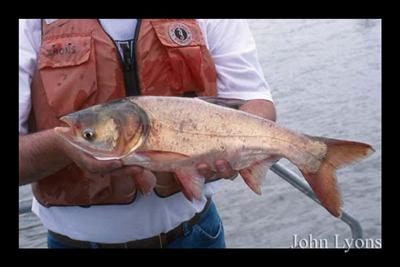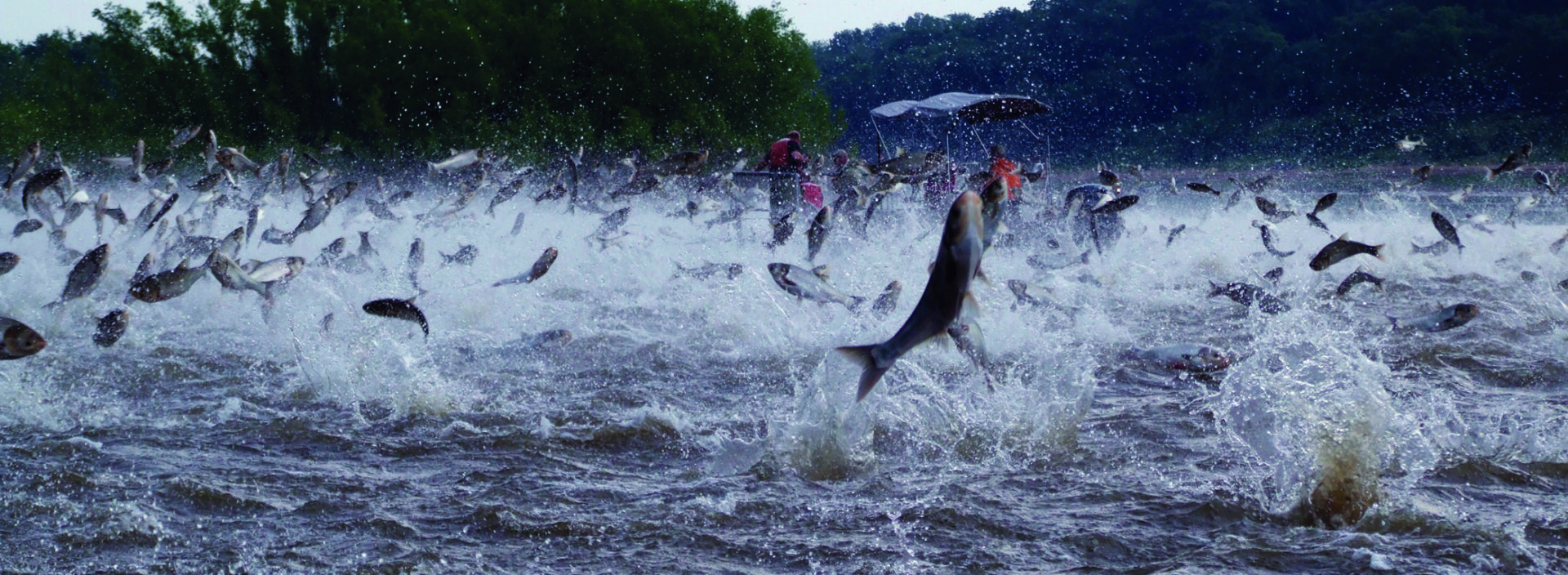
Where did the big head carp come from?
- The big head carp is native to Asia.
- It was introduced to the Mississippi River when private hatchery ponds were washed out in the state of Arkansas in the 1970s or possibly they were let go into the wild when they were no longer needed by the fish farmers.
- Appeared in open water in the early 1980s in the Ohio and Mississippi Rivers.
- Big head carp have been found in at least 19 states including Lake Erie.
Why are big head carp a problem?
- Big head carp eat blue green algae, zooplankton, and aquatic insects and larva.
- The big head carp does not have a true stomach so it must constantly eat.
- It is also thought that big head carp will compete for food with fish that are still in the larval stage, and fish populations decrease because the larval fish do not get enough food to survive.
- The big head carp is also a very high jumper. They can jump high enough to strike boaters in their boats.
- Bighead carp spawn when the water temperature is between 77-86 degrees.
- Females spawn between April and June, with the peak spawning season in late May.
- Females carry 660,000-872,000 eggs on average.
- As female big head carp get older, they increase the number of eggs they carry each time they spawn.
- Some cultures will buy two of these fish alive, one for eating, and one for release. This is not a safe practice; it will only help the populations grow.
What do big head carp look like?
- Big head carp are dark green to olive in color on their backs.
- They have gray to silvery sides, with a white to cream colored belly.
- The scales are very tiny, and the eyes are set below the midline of the body.
- The body of a big head carp is long and compressed.
- The head is very large compared to the body, this is where the fish gets its name, the big head carp.
- They can weigh from 55-110 lbs (25-50 kg).
- Big head carp can be up to 59 inches (1.5 meters) long.
- The big head carp have long gill rakers, which allow them to strain plankton from the water for food.
How do we control big head carp
The only barriers at this time that big head carp cannot get through are high dams and electric barriers.


